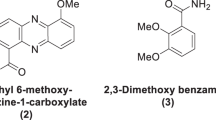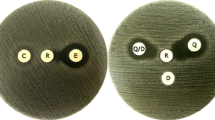Abstract
SYNERGISTIC action of penicillin with other drugs capable of assisting the defence mechanisms of the body against bacterial pathogens has been reported by a number of workers1–6. Basic dyes like brilliant green, methylene blue, acriflavine and gentian violet are well known to possess antiseptic properties, and indeed some of them are used in the cure of wound infections. Thatcher7 has demonstrated a pronounced synergistic effect in vitro between sulphanilamide drugs and dyes on Gram-negative bacteria. Though the average therapeutic dose of penicillin now used is sufficient to maintain a higher concentration than is actually necessary to inhibit a particular organism in the blood stream, the fact that there may still be very resistant organisms in certain sites, and also that sufficient penicillin may not reach certain massive infections in localized areas, make it desirable to use a combination of bacteriostatic substances. As the available evidence would suggest that penicillin and the dyes act on bacteria in different ways, it was hoped that the combined action of these would be one of mutual reinforcement or potentiation. In this note we record the results of in vitro studies on the bacteriostatic action of penicillin when alone and when combined with bacteriostatic dyes on typical Gram-positive and Gram-negative bacteria.
This is a preview of subscription content, access via your institution
Access options
Subscribe to this journal
Receive 51 print issues and online access
$199.00 per year
only $3.90 per issue
Buy this article
- Purchase on Springer Link
- Instant access to full article PDF
Prices may be subject to local taxes which are calculated during checkout
Similar content being viewed by others
References
Ungar, J., Nature, 152, 245 (1943).
Bigger, J. W., Lancet, 247, 142 (1944).
Soohoo, G., and Schnitzer, R. J., Ann. Biochem., 5, 99 (1944).
T'ung Tsun, Proc. Soc. Exp. Biol. and Med., 56, 8 (1944).
Kirby, W. M. M., Proc. Soc. Exp. Biol. and Med., 57, 149 (1944).
Hobby, G. L., and Dawson, M. H., J. Bact., 51, 447 (1946).
Thatcher, F. S., Science, 102, 122 (1945).
Author information
Authors and Affiliations
Rights and permissions
About this article
Cite this article
GEORGE, M., PANDALAI, K. Synergic Action of Penicillin and Bacteriostatic Dyes. Nature 158, 709–710 (1946). https://doi.org/10.1038/158709b0
Issue Date:
DOI: https://doi.org/10.1038/158709b0
Comments
By submitting a comment you agree to abide by our Terms and Community Guidelines. If you find something abusive or that does not comply with our terms or guidelines please flag it as inappropriate.



